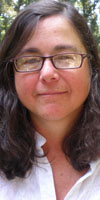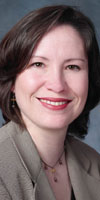|
Subscribe / Renew |
|
|
Contact Us |
|
| ► Subscribe to our Free Weekly Newsletter | |
| home | Welcome, sign in or click here to subscribe. | login |
Environment
| |
 |
February 17, 2011
Watch out for 'greenwashing' by service providers
ArchEcology

Rosenberger
|

Henderson
|
In recent years, the evolution of sustainability has brought new ideas and new practices to the building industry. This progress is reflected in new words being added to our common lexicon.
Terms like “green building,” “sustainable design,” “LEED certification,” and so on, are just a few. These words have become broadly used, though their meanings are still little understood. That phenomenon leads to something that we also have a new word for: greenwashing.
Greenwashing has been coined to describe the act of misrepresenting a product’s environmental benefits. It refers to making sustainable claims for materials that are misleading or can’t be substantiated. We see this most often in written product data and promotional materials, and look for it in how things are labeled, whether ingredients are listed, what metrics are provided and how benefits are depicted.
Just as growing demand for green products encouraged manufacturers to greenwash their products to position them for this newly motivated but undereducated marketplace, the demand for green building services has led some service providers to do the same.
So what would constitute greenwashing among green building service providers? What would indicate claims of knowledge or experience that they do not possess?
A knowledge gap
For products, we examine the written word to vet their claims, but for design consultants and contractors with whom we will have long-term relationships, we must evaluate what they are saying.
In the service industry, greenwashing often happens in the gap between understanding the concept or requirements and actually knowing how to implement the solution or practice. We need a way to evaluate claims of expertise for signs that they may not be backed up by practical experience.
To regulate product claims, we use objective third-party standards like Greenguard or EnergyStar certification, and look to organizations like the Forest Stewardship Council and Pesticide Action Network to provide a framework to evaluate products and materials within an environmental context.
For green buildings such standards have also sprung up, and chief among them by a wide margin is the U.S. Green Building Council’s LEED certification. Certifying a building for LEED requires the project team to implement a series of design standards and construction practices that demonstrate adherence to sustainable principles and realize measurable environmental benefits.
The consistency of applying these standards and the rigor of the best management practices involved amongst members of the project team have allowed a recognized system of green building ratings to evolve. The direct application of the LEED process ranks green buildings into certified, silver, gold and platinum achievement levels.
Because LEED has become so prevalent in the marketplace, it’s likely that the context in which you are evaluating your potential green building service provider is in fact to help you achieve LEED certification. Therefore knowledge and experience with LEED and its certification process has become an indirect measure of a provider’s knowledge and experience with green buildings.
3 common claims
Let’s evaluate three commonly expressed claims to green building expertise using LEED certification as our environmental yardstick:
• The “that’s the way we’ve always done it” approach and its common variant, “we bring sustainable design principles to every project.”
The basic principles of sustainable design have been around for centuries. Many consultants understand the concepts involved in green buildings without necessarily adhering to their practice. The economic necessity is that consultants provide the service that is valued enough in the marketplace to be paid for by their clients.
Up until LEED certification defined what it means to be a green building, sustainable design and its application was not a commodity that could be routinely measured and compared. Few consultants or firms had the luxury of spending project fees on things that weren’t recognized by more than a few extraordinary clients as beneficial to their project outcomes.
Even if they had that luxury by virtue of that client, one practitioner cannot accomplish a green building alone. A committed, collaborative project team would be needed to successfully navigate the design and construction process.
Given that harsh reality, it is a rare consultant that has been able to apply sustainable design to their building projects for longer than LEED certification has been recognized as the standard in the marketplace.
If they truly are a firm with an extraordinary level of commitment to sustainable design yet lack experience with LEED certification, what specific sustainable measures have they successfully incorporated? On which projects? With whom on their project team?
• The “we design and construct to LEED standards, but just don’t bother with the plaque on the wall” approach.
This claim is closely related to the first in that the sustainable design benefits are intended to be built into the delivery of the building without the demonstrated measurement of their incorporation, and without the cost of having to provide proof of compliance.
This claim is built on two separate misunderstandings: first, that LEED certification is only about unnecessary paperwork, and second, that having to demonstrate compliance serves no purpose during the course of the project.
LEED certification is definitely paperwork intensive, but keep in mind that achieving a green building is a process, not an outcome. The paperwork involved substantiates the rigor of the process. And as has often been proven, we pay attention to what we can measure.
The LEED process requires the project team to demonstrate they are paying attention to incorporating a variety of sustainable design considerations and construction practices throughout the project. It holds their feet to the fire when inevitable choices must be made.
So how will your potential consultant substantiate the delivery of this green building product, if not by virtue of LEED certification? How will you measure their performance? And how will you know whether you got what you paid for?
• The “I’m a LEED AP” approach or its common variation, “our firm has x number of LEED APs.”
A LEED-accredited professional, or LEED AP for short, is someone who has taken the time and effort to learn the requirements of the LEED program and certification process. These individuals have passed an exam to prove the extent of their knowledge.
Becoming a LEED AP is an excellent start, but does not necessarily indicate any practical experience in applying this knowledge to an actual building and its successful certification. Having numerous LEED APs in a firm is an excellent indication of commitment to the importance of sustainable principles but may not demonstrate an equal level of experience with their application.
Knowledge translates to skill only with practice. So how many certified buildings has this potential consultant been involved with, in what capacity and to what extent?
As green buildings become commonplace, consumers will become familiar with the principles of sustainable design and more comfortable with its application. Greenwashing will diminish as understanding grows.
Every green building process is different and that means requirements can vary and are always subject to interpretation. Ultimately you will be the judge of the success of your project.
Whether you are contemplating a green building process out of belief in the benefits of sustainable design or simply to satisfy a funding requirement, be explicit about your goals and expectations (whether they include LEED certification or not). Make sure the service providers you partner with are not only knowledgeable about but are also experienced in delivering green buildings.
Michelle Rosenberger and Nancy Henderson are partners in ArchEcology, a sustainable design consulting firm in Seattle.
Other Stories:
- 2 Seattle projects set ‘net-zero’ water goals
- EcoDistricts: Sustainability that goes beyond buildings
- Rethinking the big-box store: Housing? Restaurants? Farms?
- Public housing gets a green makeover
- Sustainable developments reach Puget Sound shores
- Green is catching on in the real estate industry
- City's role evolving as green practices take hold
- Yes, parking lots can be green
- Sustainable housing a natural fit for Bastyr
- Living Building project meant sweating the details


